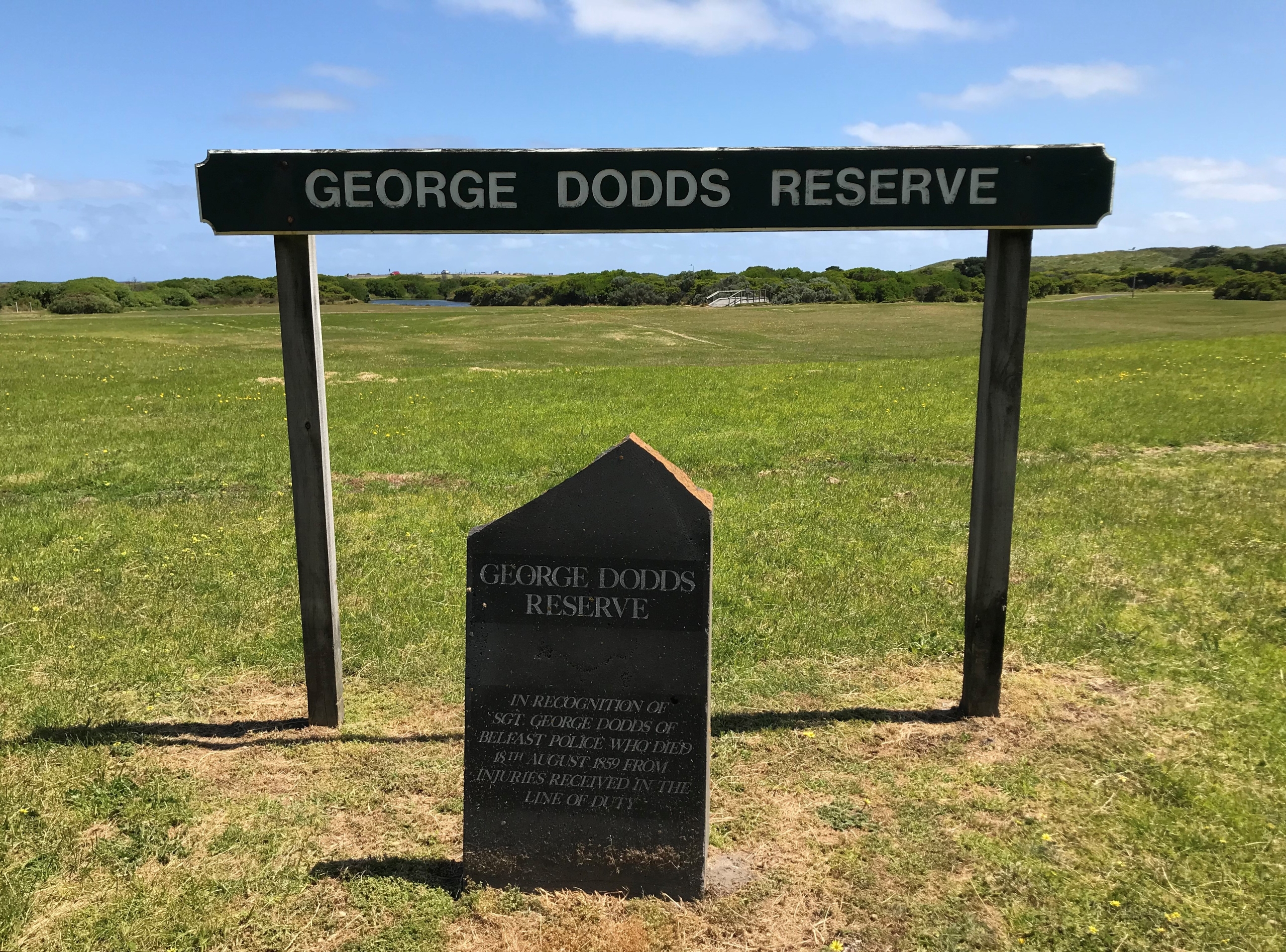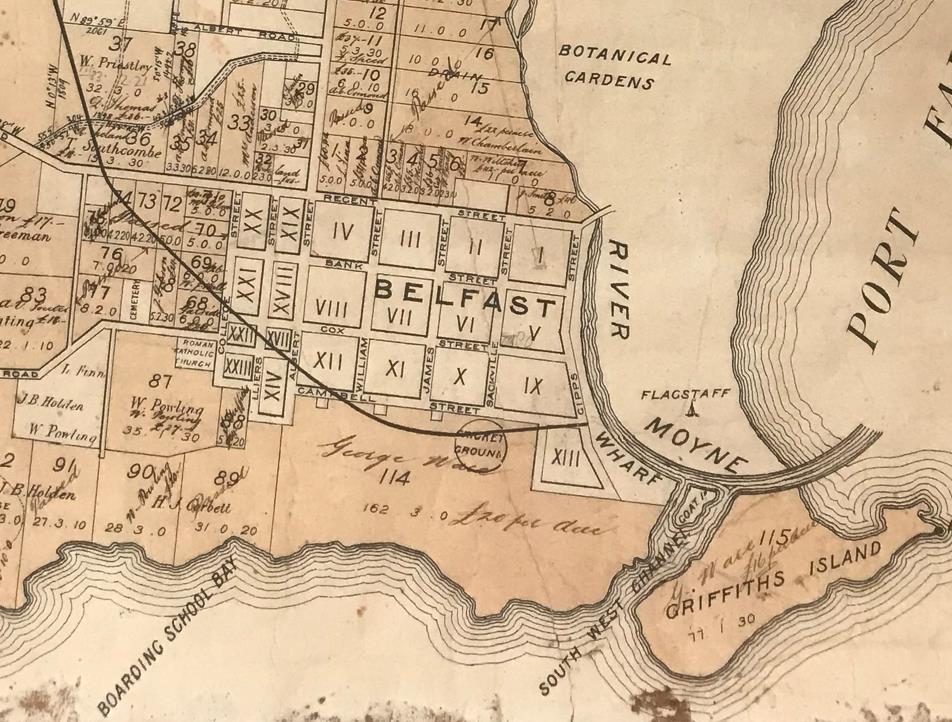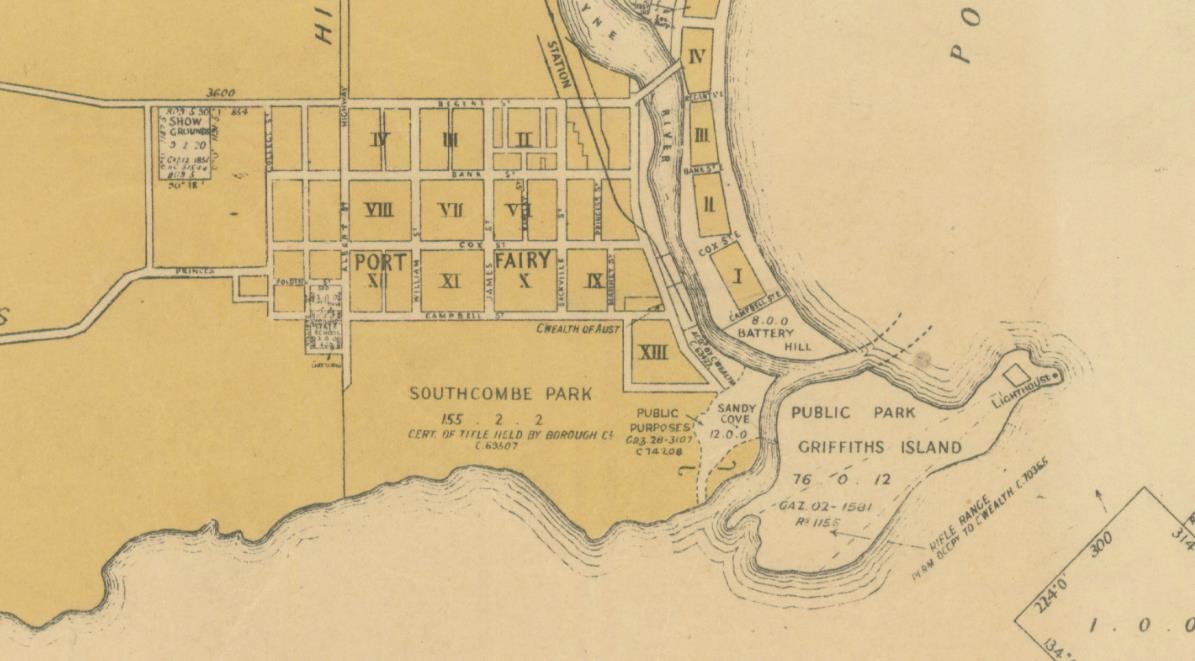
by Tracie Griffith
Sergeant Dodds died on 18th August 1858 from injuries sustained in the line of duty. Details of the events leading to his tragic demise are available in the story titled ‘Sergeant George Dodds’ on our HOME page.
A reserve was dedicated to the memory of Sergeant George Dodds in Southcombe Park on the weekend of 18-19th October 2003, in conjunction with celebrations marking the 150th anniversary of Victoria Police.
Descendants of Sergeant Dodds travelled from across Victoria and South Australia to attend the weekend’s events.
This commemoration of the life of Sergeant Dodds was the culmination of years of work by local historian Joy Frayne, who first read about the Sergeant’s death in an article and believed he was worthy of recognition. Her efforts were supported by Victoria Police, Moyne Shire and numerous community groups.
On the subject of Southcombe Park, it seems timely to interrogate a persistent rumour about the origins of this public space. Some residents of Port Fairy believe the land on which Southcombe Park is situated was left to the people of the town by Mary Southcombe, a spinster who died without issue.
Mary was the daughter of respected Port Fairy resident Thomas Southcombe. Since Mary was named after her mother and her brother was named after his father, it’s probably best to refer to the two generations as senior and junior to distinguish between them.
There may be numerous versions of the rumour, but Mary junior is said to have brought the land from the Council after her father lost it for non-payment of council rates. She apparently bequeathed the land to the people of Port Fairy for their free use, stipulating that no levies be charged for any reason.
Mary junior is believed to have donated the land prior to her death in the 1930s, so details of the bequest are absent from her will and probate documents. All paperwork relating to the transfer of the land was supposedly destroyed by unscrupulous councillors, who planned to develop it for their own advantage.
What an intrigue!
The truth of how the land that is now Southcombe Park was acquired for public use is detailed on page 304 of the well-regarded history of the town: Port Fairy: The First Fifty Years by J. W. Powling (1). Lot 114 comprising 63 acres was purchased in 1890 by the Belfast Shire Council and immediately became Southcombe Park. Thomas Southcombe was Mayor at the time and that is how the park acquired its name. The 77 acres of the Islands were obtained by the Council in the same year.
To ensure this rumour is completely put to rest, perhaps it is best to review the land holdings of the Southcombe family – Mary junior in particular.
Thomas senior and his family originated from Tavistock, Devon, England. They sailed from Plymouth in England aboard the ‘Clara’ and arrived in Portland in November 1854. Thomas senior was 35, Mary senior 33, Mary junior 6 and Thomas junior 4.
Thomas senior was a builder and accumulated significant land holdings in Port Fairy. When he died on 4th February 1897, he bequeathed his money and property to his wife and daughter.
He left part of Lot 3, Block 6 in Sackville Street to Mary junior, on which two shops were erected (numbers 36 and 38; a boot and carpenter shop at the time).
To his wife, Mary senior, he left the remainder of his assets for life, under the control and management of his daughter. These assets were to be passed to both his daughter and his son after the death of his wife. In the event that his son predeceased him or his wife without lawful issue, everything was to be left to his daughter (and her heirs and assigns). The daughter was the sole executor.
The remainder of Thomas senior’s assets included another part of Lot 3, Block 6 in Sackville Street; Lot 1, Block 9 at the corner of Cox and Market Streets (now Wishart Street); Lots 16 and 17, Block 5 with a frontage to Prince Street; and a property in Regent Street (on the Hamilton side of Albert Street, which is now the Princes Highway).

Mary junior remained in Port Fairy her entire life. Thomas junior married a Tasmanian girl in Dunedin, New Zealand in 1881, and he and his wife settled in the USA.
Mary senior died in January 1902 and her assets were distributed between her two children. Mary junior acquired half the land holdings held by her mother, apart from Lot 16, Block 5 that was bequeathed solely to her brother.
Thomas junior died only five months after his mother on 4th June 1902 in San Francisco, California. His widow, Madeleine Southcombe, returned to Port Fairy and settled her husband’s probate in the Victorian Supreme Court that same year. Thomas junior died intestate and there was no issue from the marriage.
Mary junior died in 1938 (age 90), nearly half a century after the establishment of Southcombe Park. After the settlement of her liabilities and various minor bequests, she left the remainder of her liquidated assets to St John’s Church, specifying the money be used to fund building works (specifically completion of the blue stone perimeter wall and construction of a new tower).
Madeleine Southcombe died in 1943 in California.
It is important to recognise the family did not own land within the area now known as Southcombe Park.
Perhaps it is our shared love of Southcombe Park and the remarkable access it provides to the beaches, the South West Passage and Griffith Island that has given life to this rumour – a reflection of our desire to cherish and protect these spaces. Port Fairy is lucky to have had such a far-sighted Council as far back as 1890, acting as they did on the community’s behalf.
Reference:
- Powling, J.W. (1980). Port Fairy: The First Fifty Years. Melbourne: Heinemann.
